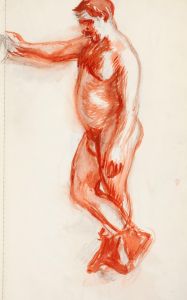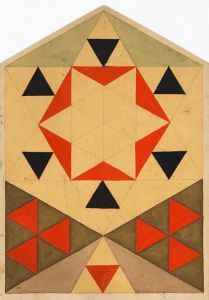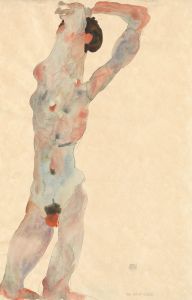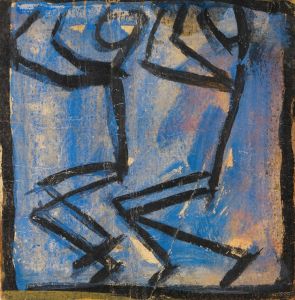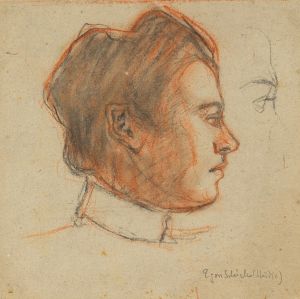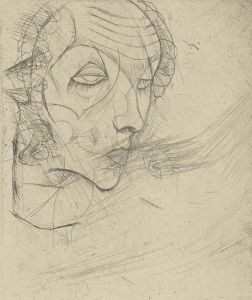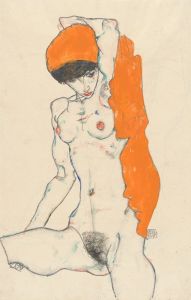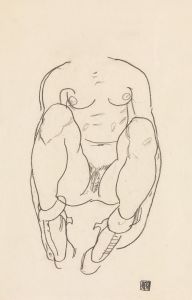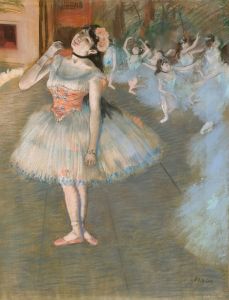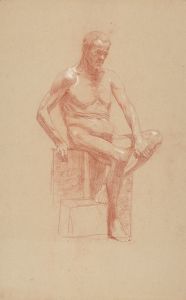
Tänzerin mit blauem Rock
A hand-painted replica of Egon Schiele’s masterpiece Tänzerin mit blauem Rock, meticulously crafted by professional artists to capture the true essence of the original. Each piece is created with museum-quality canvas and rare mineral pigments, carefully painted by experienced artists with delicate brushstrokes and rich, layered colors to perfectly recreate the texture of the original artwork. Unlike machine-printed reproductions, this hand-painted version brings the painting to life, infused with the artist’s emotions and skill in every stroke. Whether for personal collection or home decoration, it instantly elevates the artistic atmosphere of any space.
Egon Schiele, an Austrian painter known for his distinctive style and contribution to early 20th-century art, created "Tänzerin mit blauem Rock" (Dancer with Blue Skirt) in 1913. Schiele was a protégé of Gustav Klimt and a prominent figure in the Expressionist movement, which sought to convey emotional experience rather than physical reality. His work is characterized by its raw intensity, bold lines, and often provocative subject matter.
"Tänzerin mit blauem Rock" is a fine example of Schiele's unique approach to portraiture and the human form. The painting depicts a dancer, a subject that Schiele explored in various works, reflecting his interest in movement and the human body. The dancer is portrayed with a blue skirt, which stands out against the more muted tones of the rest of the composition. Schiele's use of color is deliberate, drawing attention to the garment and adding a dynamic quality to the piece.
The painting is executed with Schiele's characteristic line work, which is both expressive and precise. His ability to capture the essence of his subjects with minimal detail is evident in this work, where the dancer's pose and expression convey a sense of grace and fluidity. The composition is both intimate and dynamic, inviting the viewer to engage with the subject on a personal level.
Schiele's work often explored themes of sexuality, identity, and the human condition, and "Tänzerin mit blauem Rock" is no exception. The dancer's pose and attire suggest a sense of performance and exhibition, common themes in Schiele's exploration of the human figure. His interest in capturing the inner life of his subjects is apparent in the way he portrays the dancer, not just as a physical form, but as a being with depth and emotion.
The painting reflects the broader cultural and artistic movements of the time, including the Viennese Secession, of which Schiele was a part. This movement sought to break away from traditional artistic conventions and embrace new forms of expression. Schiele's work, with its emphasis on emotional depth and psychological complexity, was a significant contribution to this movement.
Egon Schiele's life was tragically short; he died in 1918 at the age of 28, a victim of the Spanish flu pandemic. Despite his brief career, he left a lasting impact on the art world, and his works continue to be celebrated for their innovative approach and emotional intensity. "Tänzerin mit blauem Rock" remains a testament to Schiele's skill as an artist and his ability to capture the complexities of the human experience.
Today, Schiele's works are held in high regard and are featured in major art collections around the world. "Tänzerin mit blauem Rock" is a valuable piece within his oeuvre, exemplifying the qualities that make Schiele's art both compelling and enduring. His influence can be seen in the work of later artists who similarly sought to explore the depths of human emotion and experience through their art.





